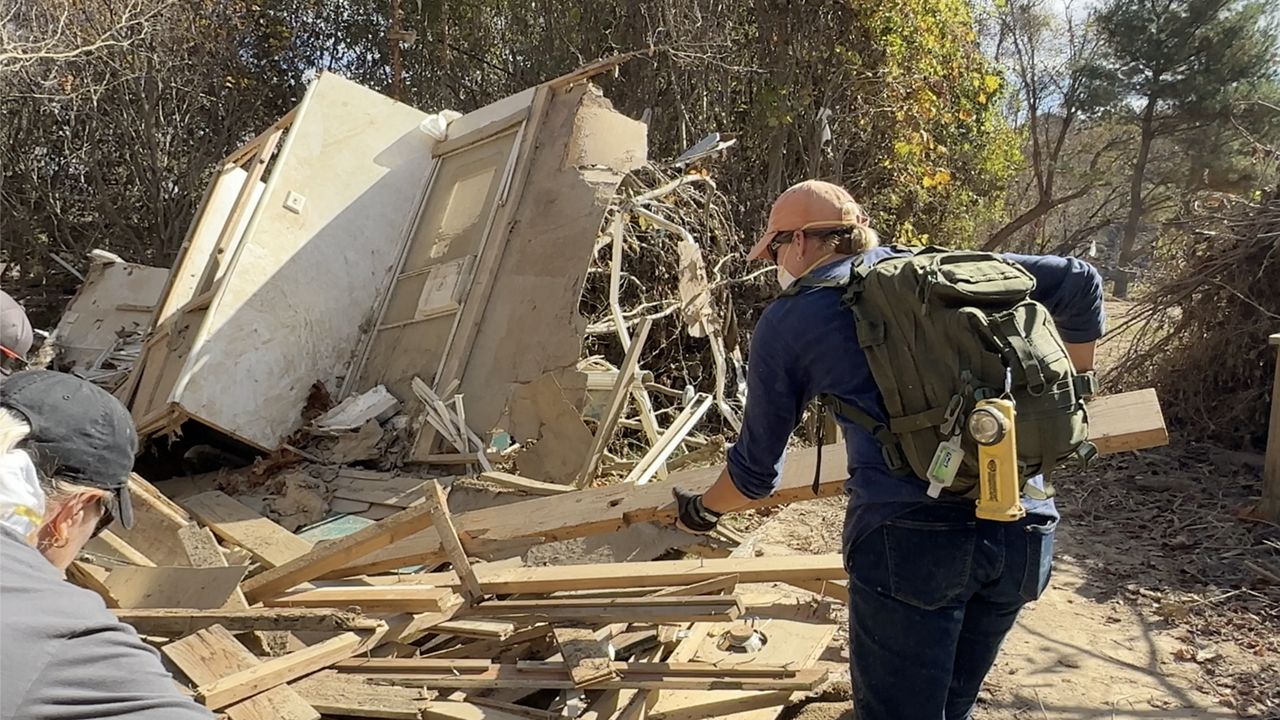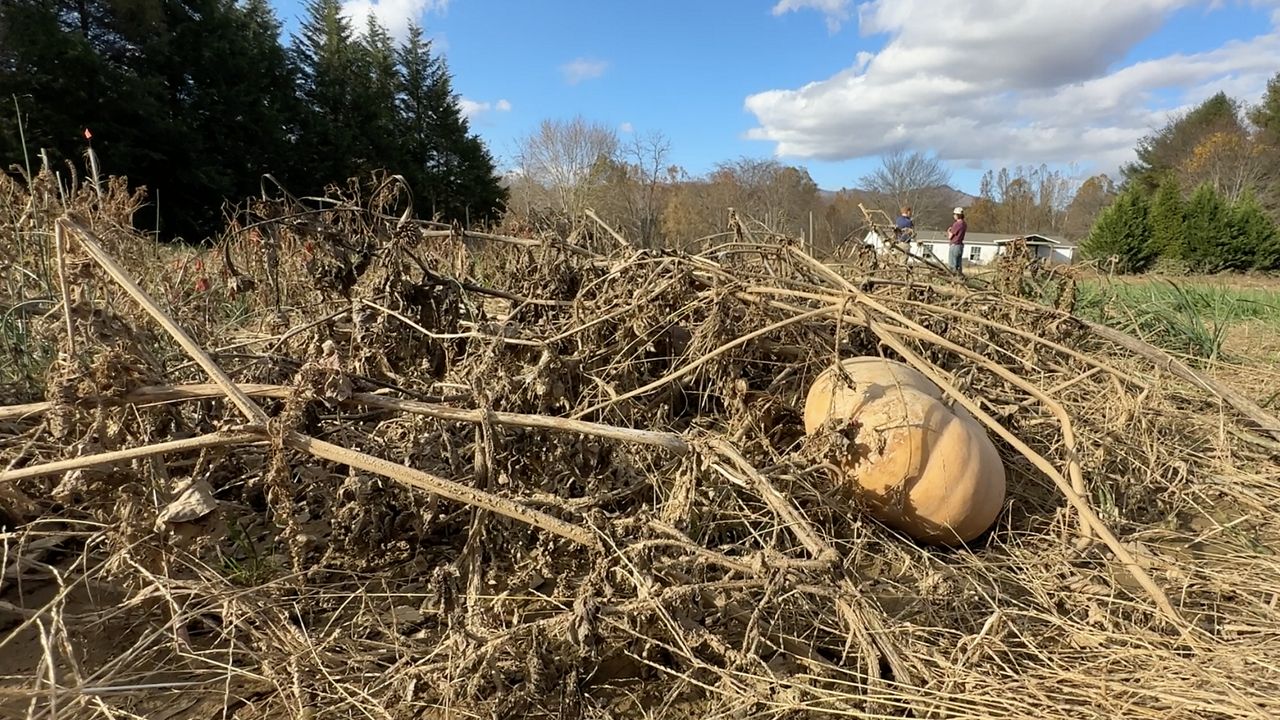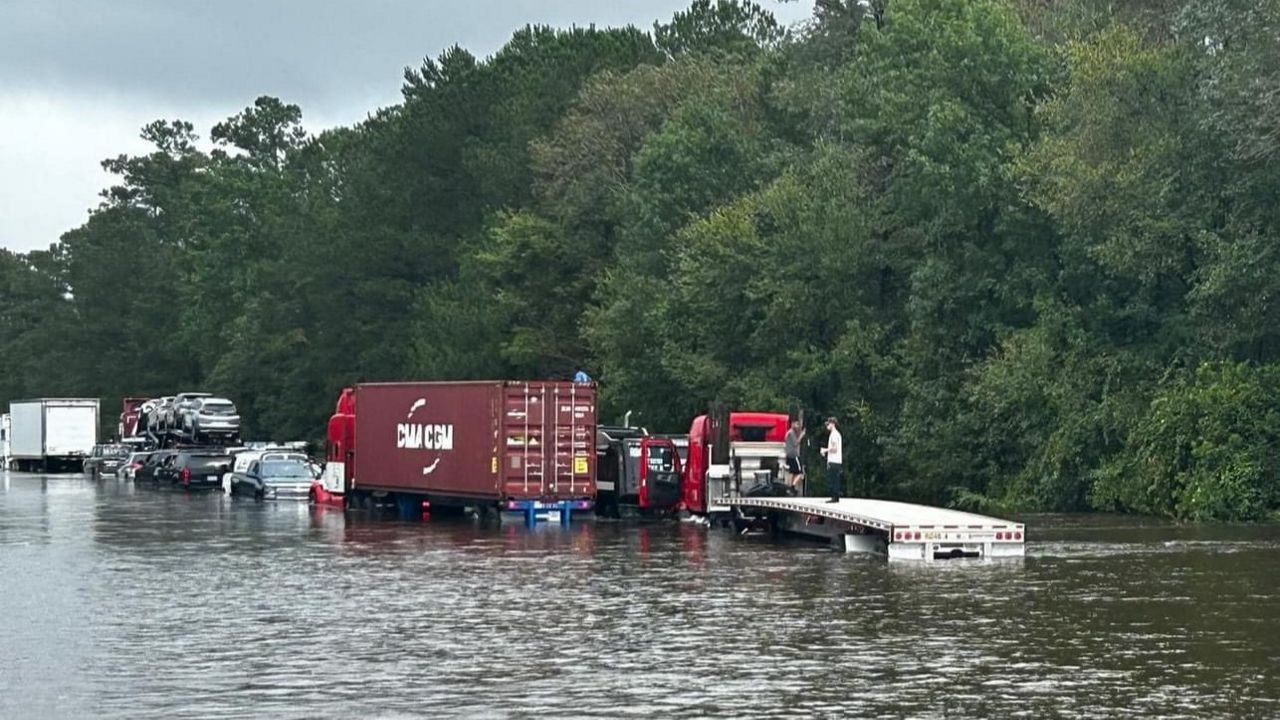Asheville is home to NOAA's National Centers for Environmental Information, or NCEI. It houses the world's largest archive of climate and environmental data. The scientists there, like many in western North Carolina, are still working to understand the magnitude of Helene.
NCEI climate scientist Jake Fortune said, “This has been mind-boggling. Helene and the flooding that happened here in Asheville is now the flood of record.”
Spectrum News 1 met up with Fortune while surveying damage in Asheville's Carrier Park along the French Broad River. He's been studying extreme weather events through his almost two decades at NCEI. This storm though, hit home.

“My kids play on that playground all of the time. So, it’s pretty close to my heart and my family’s heart. It’s kind of a gut-punch seeing the state that it’s in," Fortune said.
Whether you live here or not, the damage that a tropical system was able to do around the mountains of western North Carolina is still tough to comprehend for many.
Fortune told us that one of the reasons NCEI is located in Asheville is because it historically has been a climatologically safe location.
Of course, that was not the case over a month ago when the rain started days before Helene even arrived. A stalled front tapped into moisture from Helene when it was still far away from the Carolinas.
Fortune described how that rain combined with the storm itself created widespread flooding. “Think about Mount Mitchell, the highest point in North Carolina, not too far from here, got 30 inches of rain over those 3 days. All that water ran into the river basins.”
Helene is just one example in a troubling trend. “We are experiencing more heavy precipitation events. And hurricanes are tending to move more slowly,” Fortune said.
Spectrum News 1 also met with Carl Schreck, Senior research scholar with the North Carolina Institute of Climate Studies. His office is in the same building as NCEI. Schreck says there's no debate on what's causing the heavier rainfall.
“One of the things we understand best about climate change is that as the earth is warming, there’s more water vapor in the atmosphere,” Schreck said.
Schreck has done extensive research on inland flooding from tropical systems. Helene will be a particularly difficult storm to study.
“To know dozens and dozens of people in my community died from the inland rainfall and flooding, it’s just really horrific to see that firsthand," Schreck said.
Just a month after Helene hit, there are already early estimates on what kind of role our warming climate played in Helene's destruction. Schreck told us more about that research.
"Something like 20 or 30% of the rain that fell was associated with the warming atmosphere. It would have still been a disaster anyway, but it would not have been the scale that we saw,” Schreck said.
Inland flood events like Helene are expected to be more costly in the future. A study by independent group Climate Central found that at our current rate of warming, flooding will cost North Carolina around 34% more by 2050. The greatest impacts are expected in not only coastal communities but also in western North Carolina.
)
Our team of meteorologists dives deep into the science of weather and breaks down timely weather data and information. To view more weather and climate stories, check out our weather blogs section.










